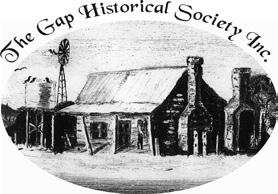Memories of the Elita Theatre Ashgrove
by Doug Best
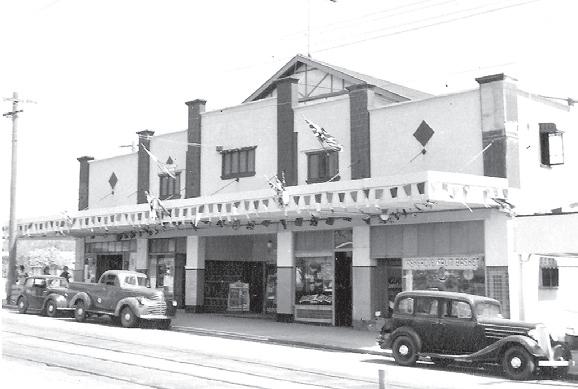

by Doug Best

(as originally published in the May and June 2006 Western Echo)
by Doug Best

Born to parents Reg and Muriel (nee Prackert) Best in 1927, while living in a home on the corner of Payne and Moggill Roads The Gap, my memories began when my family moved to Holmesbrook Street Ashgrove in the mid 1930s. The Elita Picture Theatre, which was built circa 1924, was situated on the corner of Waterworks and Stewart Roads and during the 1930s the theatre was operated by Messrs, Fischer & Knott. (Mr Fischer also published the local paper called the Northwest News.) Prior to this time I am told it was managed by Messrs. MacGregor Lowndes and Elliott, with Mr Elliott also owning the shop on the corner which was a milk bar, ice creamery and lolly shop, which he sold to Mr Len Todd in the late 1930s. The shop then was owned by Mrs Howard and Mrs Watson and then by Mr Nicolaides.
The second shop, specialising in radio repairs, was run by Frank O’Loughlin who was also the projectionist for the theatre during the war years. The third shop was a fruit and greengrocer run by Syd Ingham who shifted to premises at the West Ashgrove tram terminus and which was then run by Mick Whelan.
In the early 1940s the theatre was taken over by “Liberty Theatres” a group whose holdings including owning or leasing a chain of cinemas, which included the Grange (Liberty), Windsor (Crystal Palace), Kelvin Grove (Prospect), Red Hill (State), Graceville (Regal) as well as the cinema at Taringa.
The Ashgrove Elita was later sold and the Prospect was leased to Mr Johnson who proceeded to erect shops along the Stewart Road side of the Elita, not too long before the arrival of television.
In the early 1940s, aged 15, I was employed as assistant projectionist at Ashgrove. In those days it was a legal requirement that two people be in attendance in a projection room at all time while the projector was operating. Film stock in those days was highly flammable and only took a few seconds to combust if the running film became jammed in the gate of the projector, in front of the arc light, unlike the safety film in use today.
The equipment we were using at that time was two Hahn Gertz projectors, one slide projector, manual fed carbon arcs and a Western Electric sound system. The film was on 1,000 & 2,000 foot spools which travelled through the projector at 90 feet per minute - the average movie length was 1½ to 2 hours.
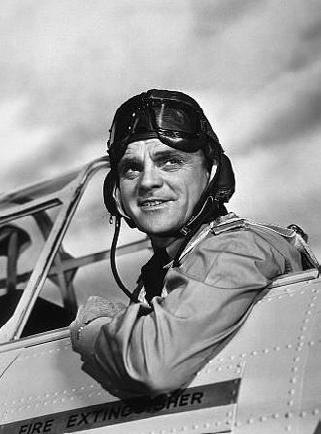
Firmly etched in my mind is the first night I started at the theatre. The main feature screening was “Captain of the Clouds” starring James Cagney and Dennis Morgan, which had just started and the introduction was quite a long foreword, explaining the story of the film, when all of a sudden the projector started to go twice as fast as it should and I immediately wondered what I had touched that I shouldn’t have!
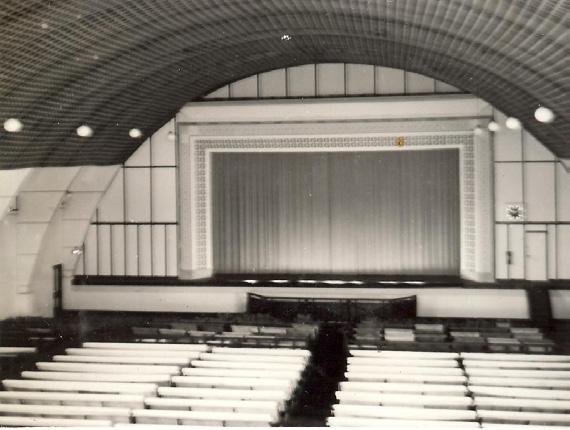
Stage and seating of the Elita Theatre, Ashgrove
Automatically projectionist Frank O’Loughlin opened up the control cabinet which controls the speed of the projector and replaced a faulty valve with a new one and the speed went back to normal, as did my heart beat.
That night I learnt a most important work lesson - never panic. Just go quickly to right a problem.
The evening routine would be to clean and oil, then run the projectors for a few minutes, carbon the arcs, start playing the records when the doors opened at around 7.00pm, thread the projectors ready for screening, and start showing advertising and coming attractions slides. At 7.30pm sharp we would play the National Anthem (God Save the King), then play the newsreel which ran for 10 minutes or so, followed by the coming attraction preview which ran for approximately five minutes then a cartoon (10 minutes) and the supporting movie (anywhere from 60 to 90 minutes) and then there would be a 10 minute break for the Interval.
We would then show the slides as we had earlier and prepare for the second half while patrons stretched their legs, patronised the shop for drinks, ice creams & lollies, or visited the restrooms.
The recommencement of the programme usually started with a trailer of next weeks programme, if there was time we would include a short film - like James Fitzpatrick’s Travel Talk or Passing Parade then the main feature which would finish at approximately 11.00pm.
During the war years, when daylight saving was implemented during summer months, we would have to close the shutters on each side of the building to darken the theatre enough to begin screening, then open them to allow the breeze in when it became dark outside - no air-conditioning in those days - which was a job for the downstairs staff.
I can remember before I worked there, during winter they used to have 44 gallon drums with coke burning in them to warm up the theatre, but that idea didn’t last too long. I would imagine it was because of the safety angle, in case any patron was burnt, or in fact the possibility that the smoke from the burning coke would discolour the screen.
When I was working there, we put coloured lights behind the proscenium arch, which is on both sides and above the stage. In summer we would put one green, one blue bulb alternately, while in winter it would be all red, giving the psychological effect of cooling or warming to the patrons.
The disturbance of the Army heading back to Enoggera Barracks, with their Bren gun carriers, one after the other and the caterpillar tracks creating an awful din as they travelled on the tram lines up Waterworks Road before turning into Stewart Road, would force us to increase the volume so patrons were able to hear the movie.

At times there would be some comical disturbances from a patron with a sense of humour, who would shout out some humourous remarks in regards what had just happened or been said on screen, which would usually bring a laugh from the audience. The noise of bottles being rolled down the cement floor would bring forth a similar chuckle. I recall one time someone threw a
bottle at the screen, which luckily didn’t do any damage to anybody, and as it fell short of the screen there wasn’t any problem other than the broken glass to be cleaned up. As no one admitted to having thrown the bottle, about 12 to 15 boys were marched up to the vestibule to be questioned by our local, popular and well-respected policeman of the time (Constable Bernie O’Keefe). The youngest lad said to him “I don’t want to get into trouble, it was him (pointing to one of the older boys)” After being sternly warned of the consquences of what could have happened, they were warned not to do anything like that again and were then allowed back into the theatre. I would love to know if anything happened to the little fellow on the way home from the show!
When I first started work at the Elita it was the duty of the projectionist to sweep out half the theatre with the assistant sweeping the remaining half and clean the toilets, which I did for quite some time. The Theatrical Union subsequently insisted on full time cleaners being employed at theatres.
My work duties were well defined and followed a strict routine on a weekly basis as follows:
Monday - sweep half the theatre, clean toilets, sweep vestibule
Tuesday - same as Monday plus riding my bicycle around the area of Ashgrove, Red Hill, Bardon, West Ashgrove and Enoggera Army Camp erecting posters on the billboards. As Tuesday and Friday saw a change of programme, the film had to be checked by rewinding by hand to make sure there was no damage or loose joins, before it was put through the projector.
Wednesday - same as Monday
Thursday - same as Tuesday, including billposting for the next Tuesday/ Wednesday programme
Friday - as there was no screening on Thursday night, no sweeping was needed. I would travel to the city with the manager to collect the weekend programmes for the Liberty Theatre Cinemas and deliver them to each theatre.
weekend programmes for the Liberty Theatre Cinemas and deliver them to each theatre.
The film exchanges were spread all over town. Columbia, Universal, RKO and B.E.F. (British Empire Films) were situated next to Shell House in Ann Street, between Creek and Wharf Streets; Paramount and Warner Bros. were in Ann Street, between Wharf and Queen Street; 20th Century Fox were in a lane off Adelaide Street (between Wharf and Queen Streets); Unitied Artists were next to Custom House (where the SS Koopa used to berth) while MGM were situated in Elizabeth Street, by the side of the Metro Theatre.
The Elita screened at 7.30pm Friday, Saturday and Monday evenings, with a matinee on Saturday and Public Holidays. The costs were: centre seats 2/7D (26¢) 1/11D (20¢) and 1/3D (13¢); with a different programme on Tuesday and Wednesday the prices were 1/11D and 1/3D, which included an Amusement Tax of 7D, 5D and 3D. When a blockbuster film was being shown a queue would form outside the ticket booth well in advance of opening and it was not unusual for theatres back then (especially city theatres) to have a ‘FULL’ sign on show.
Matinees were screened every Saturday and on Public Holidays, with the exception of Good Friday, ANZAC Day and Christmas Day. We would screen the same programme as the night programme if it was suitable for children, if not, we would substitute with something more appropriate, usually a western or a comedy which the kids always enjoyed. Instead of showing the news, we always included a serial such as “Winslow of the
Navy”, “Overland Trail”the story of the pony express starring Noah Berry Jnr., or a Buck Jones, Tom Mix or George O’Brien western thriller.
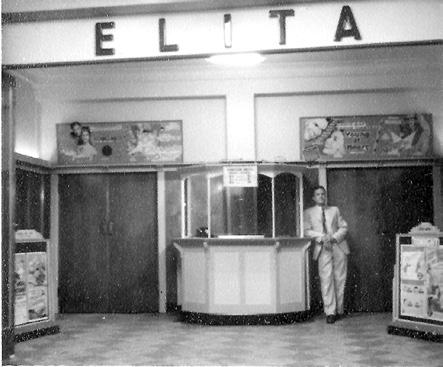
With no screening on Thursday, occasionally during the war years, Len Todd - who also conducted the shop in front of the theatre - would produce and direct a Vaudeville stage show in aid of the well remembered radio station 4BH “Smoke for Sick Soldiers” charity. Len was able to assemble some great artists, many appearing courtesy of the Cremorne Theatre, which was the home of vaudeville at that time, to do their bit for the war effort. Among them I recall performers such as Peggy Mortimer, a very young violinist who later was to become mother of Peta Toppano of television fame, Evie Hayes, Roy Rene, and Andy Shearer. With local talent Dawn and Robin Pitkeathly, Mavis Monk, Dot Powell, Irene Greer, Frank Masters and many more, the local people turned out in great numbers to support this worthy cause.
Back then no business opened on 25 April, ANZAC Day. As the Elita had no screening that night, the local Ashgrove RSL would hold the ANZAC night Remembrance Service in the theatre. Being eager to ensure all went well with the evening, one year I asked the bugler if he wanted the microphone turned on for the the playing of the
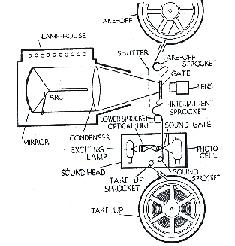
Projector threaded, ready to project the film to the screen. The light comes from the arc which is made by two carbons forming a flame which is projected by a mirror behind the flame through what is called the aperture gate through a lens, onto the screen.

Last Post, to which he replied “Only if you want to deafen everybody here!” Believe me, we most certainly did not need it. I think the bugler was Mr Crossan of Ashgrove. Around 1944, the RSL decided to hold the service in their own Memorial Hall, situated in Waterworks Road opposite the theatre, down towards St. Finbarr’s, as numbers were getting fewer.
That night there was a fire in the shop at the corner of the theatre and luckily a passerby, Stewart Watt, noticed smoke coming out from under the door and with quick thinking he rang the manager, Reg Lefrancke, who in turn rang the Ithaca Fire Brigade (which was then located in Enoggera Terrace at Red Hill), then the Police who handled the situation without any real damage being suffered.
It was in this same shop on the 21st October 1990 the fire started which destroyed the Elita theatre, which had provided many happy times to locals over a number of years. Following the fire it was replaced by the present block of shops.
I was transferred to operate the projector at the State Theatre in 1945 but in 1948, for the last time, I returned to the Elita theatre for a few nights to help out. I recall some of the great movies screened at the Elita while I worked there, it may bring back fond memories for some readers. These movies portrayed a variation of feelings such as excitement, laughter, tears, thrills, and enjoyment evoked by the greatness of the stories and their stars.
“The Squatter’s Daughter” a 1933 Australian production with John Warwick, and Jocelyn Howarth, who was renamed Constance Worth when she went to Hollywood.
“Sanders of the River” (1935) Paul Robeson, Leslie Banks and Nina Mae McKinney
“Showboat” (1936) Paul Robeson, Irene Dunne and Allan Jones
9................................................
“Florian” Robert Young and Helen Gilbert (1940)
“The Great Waltz” the story of Johann Strauss featuring Fernand Gravey and Miliza Korjus (1938)
“Rebecca” with Laurence Olivier and Joan Fontaine (1940)
“Wuthering Heights” 1939 production with Laurence Olivier and Merle Oberon
“Captains Courageous” Spencer Tracy, Lionel Barrymore and Freddie Bartholemew (1937)
“Boys Town” series with Spencer Tracy, Mickey Rooney (1938)
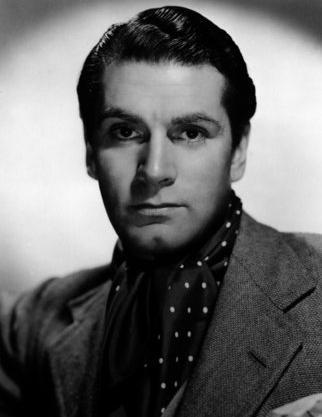
“The Plainsman” Gary Cooper, Jean Arthur (1936)
“Jesse James” Tyrone Power, Henry Fonda, Nancy Kelly, Randolph Scott and Brian Donlevy (1939)
“Return of Frank James” Henry Fonda, Gene Tierney, Jackie Cooper and John Carradine (1940)
“Blossoms in the Dust” (1941), “Mrs Miniver” (1942), “Madame Curie” (1943) Greer Garson and Walter Pidgeon
“Destry” (1954) with Audie Murphy and Mari Blanchard, followed by “Destry Rides Again”
“Annie Oakley” (1954) Gail Davis
“Charge of the Light Brigade” (1936) Errol Flynn and Olivia de Havilland
“This is the Army” (1943) George Murphy and Joan Leslie
“The Silence of Dean Maitland” (1934) and Australian film By Director Ken G. Hall starring John Longden, Charlotte Francis and Constance Worth (Jocelyn Howarth)
“Shores of Tripoli” (1942) another film directed by H. Bruce Humberstone and starring John Payne, Maureen O’Hara and Randolph Scott.
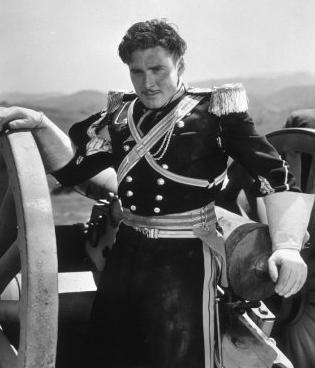
“Flying Tigers” (1942) featuring John Wayne, John Carroll and Anna Lee.
“Forty Thousand Horsemen” (1941) with Harvey Adams, Chips Rafferty Grant Taylor and Betty Bryant, directed by Charles Chauvel.
“The Overlanders” (1946) with Chips Rafferty, Daphne Campbell and John Nugent Hayward
“Circumstantial Evidence” (1945) featuring Michael O’Shea, Lloyd Nolan and Trudy Marshall
“Gaslight” (1944) starring Charles Boyer, Ingrid Bergman and Angela Lansbury
“The Adventures of Robin Hood” (1938) pairing together again Errol Flynn and Olivia de Havilland and featuring Basil Rathbone as the villainous Sheriff of Nottingham and Alan Hale (snr) as Little John.
“The Adventures of Robin Hood” (1955) the precursor to the popular television series. Starred Richard Greene and Bernadette O’Farrell as Maid Marian, replaced from 1957 by Patricia Driscoll, Alan Wheatley as the Sheriff of Nottingham and Alexander Gauge as Friar Tuck.
“Sahara” (1943) with Humphrey Bogart, J. Carrol Naish, Bruce Bennett and Lloyd Bridges.
“On Our Selection” (1932) another Australian gem from director Ken G. Hall and starring Bert Bailey, Fred MacDonald, John McGowan, Alfreds Bevan, Molly Raynor and Dick Fair.
“Topper” (1937) starring Constance Bennett, Cary Grant and Roland Young.
“Charlie Chan” series which started in 1931 with “Charlie Chan Carries On” and starred Warner Oland, John Garrick, Marguerite Churchill and Warren Hymer. Boris Karloff, Keye Luke and William Demarest starred in the popular “Charlic Chan at the Opera” (1936)

“A Family Affair” (1937) the beginning of the hugely popular series starring Mickey Rooney as the irrepressible Andy Hardy. While Lionel Barrymore played the part of Judge Hardy, the role was later adopted by Lewis Stone partnering Fay Holden as Mrs Emily Hardy from “You’re Only Young Once” (1937). There were generally two Andy Hardy movies made each year allowing audiences to witness Andy’s growing up.
“Rainbow on the River” starring Bobby Breen, May Robson and Charles Butterworth.
A myriad of musicals starring Alan Jones, Jane Frazee, Donald O’Connor and Peggy Ryan, Nelson Eddy and Jeanette MacDonald. Who can forget With a Song in My Heart, the story of Jane Froman starring Susan Hayward.
...and lots more with Bette Davis, Joan Crawford, Leslie Howard, Rex Harrison, Fred Astaire, Ginger Rogers, Dick Powell, Ruby Keeler, Bing Crosby, Bob Hope, Dorothy Lamour, Dennis O’Keefe, Guy Kibbe, George Raft, Don Ameche, Peter Lorre, Sydney Greenstreet, George Formby, Ralph Richardson, Jack Hawkins, Stewart Granger, Kenneth Moore, Robert Mitchum, Sally Field, Patricia Roc, Kay Kendall, Joan Fontaine (sister of Olivia de Havilland), Betty Grable, Merle Oberon, Vivian Blaine, Claire Trevor, Rita Hayworth, Ann Miller and Jane Powell just to mention a few.
I recall with great affection memories of my time working at the Elita Theatre, the many life-long friendships formed and that period of my life working in the theatre industry.
Photographs of the Elita Theatre courtesy of Pat Johnson, widow of Elita Theatre owner, Wallace Johnson
In part two of Memories of the Elita Theatre, in the June 2006 edition of The Western
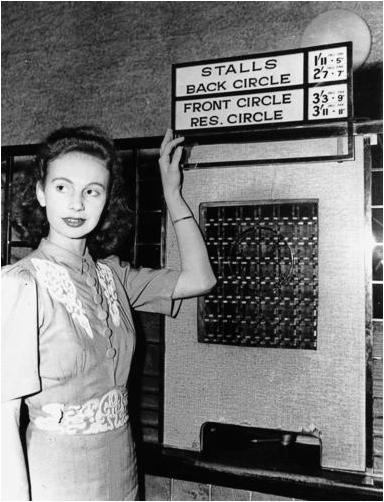
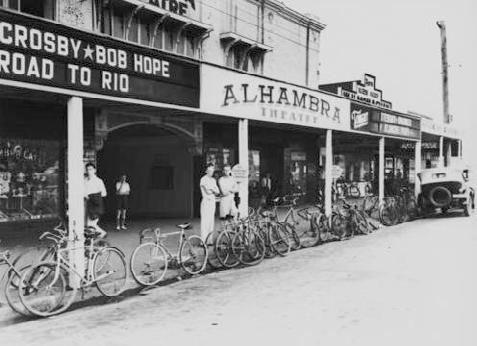
Echo, I requested for anybody being able to recall anything about the cinemas of that era to contact me.
I am pleased to have received such a great response which I have now incorporated into this booklet and my sincere thanks go to all that contributed. I received some information from an ex-Ashgrove resident, now living in Tarragindi, who had been given the two copies of The Western Echo and saw the request and then passed on the information to me regarding some theatres on the southside of Brisbane which is as follows:-
The Annerley Theatre as built in 1914-1915 next to the Annerley Hotel at the junction of Annerley Road and Ipswich Road. It was originally openair, enclosed by high galvanised walls. It was demolished around 1955.
The Boomerang Theatre was built circa 1924 by Mr Ron Fielding who also built the Odeon near Chardon’s Hotel in 1940. It is believed that by the 1950s he conducted up to ten theatres and was very well known in the film industry.
The Ideal Theatre at Yeronga was owned by the Holzberger family.
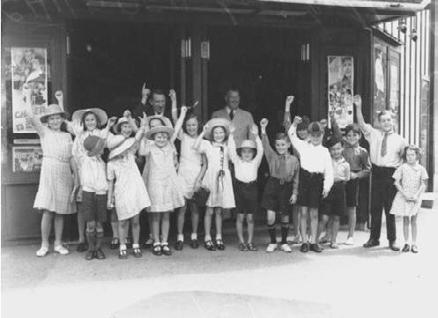
The Alhambra Theatre at Stones Corner was originally open-air when built.
There was a Princess Theatre in Annerley Road, opposite the Mater Hospital built in 1888, then another theatre was built and called the Princess Theatre, in Logan Road near Nursery Road. It was conducted by the McGregor Lowndes family. It closed in the 1970s.
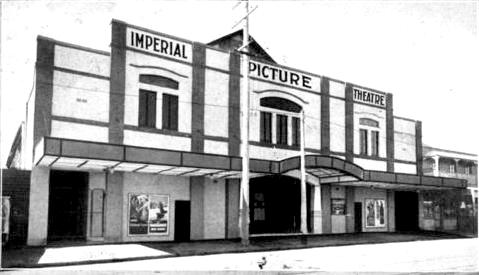
The Hollywood Theatre, on the corner of Logan and Chatsworth Road was owned by Mr Marshal Palmer who also held stage shows and ‘amateur hour’ with Harry Dearth. I was also informed by another movie buff that the Cremorne Theatre, before it turned to vaudeville, was used for the first release of Metro Goldwyn Mayer (MGM) films until the Metro Theatre was opened in Albert Street, Brisbane.
Speaking of the Cremorne and Theatre Royal, which was made famous by some very fine acts, such as Evie Hayes, Will Mahoney and comedians like George Wallace Snr and George Wallace Jnr., reminds me of a friend, Millie Smith, who told me she recalls seeing George Wallace Snr. in Sydney in his very last performance, which did not finish until 2.00am with the words “I wish all you buggers would all go home as I want to go to sleep!”
I believe we owe the greatness of the Imax Theatre concept, which was the work of Mr Ron Jones of Brisbane, who unfortunately I believe was financed by the Canadians, but still puts him amongst the other talented Australians who contributed greatly in their respective fields such as movie stars Errol Flynn, Merle Oberon, Rod Taylor and Frank Thring; directors: Ken G. Hall, Charles Chauvel, Jedda (1955), F.W. Thring “The Sentimental Bloke” (1932), Damien Parer “Kokoda Front Line!” (1942) and Frank Hurley (director, cinematographer, producer and writer) best known probably for his “Magic Carpet” series which brought to the screen the wonders of other lands; cinematographers - such as Dean Semler who received wide acclaim for Dances with Wolves (1990) - all of whom have made Australia leaders in the film industry.
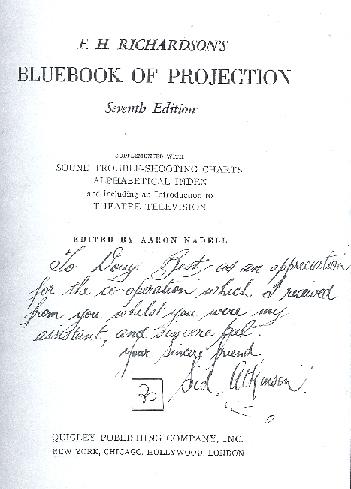
Expressions of thanks to Doug Best from his good friend Sid Aitkinson on Sid’s departure from cinema work at the State Theatre, to join the Queensland Police Force, eventually retiring, as the Assistant Queensland Police Commissioner. The two books inscribed were The Complete Projectionist, 3rd Edition by R. Howard Cricks. F.R.P.S. and F.H. Richardson’s Bluebook of Projection, 7th Edition
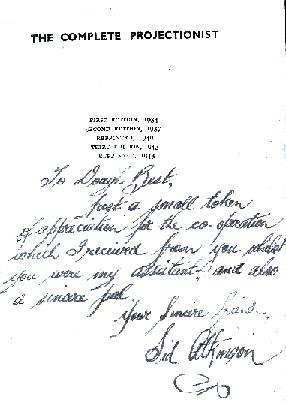
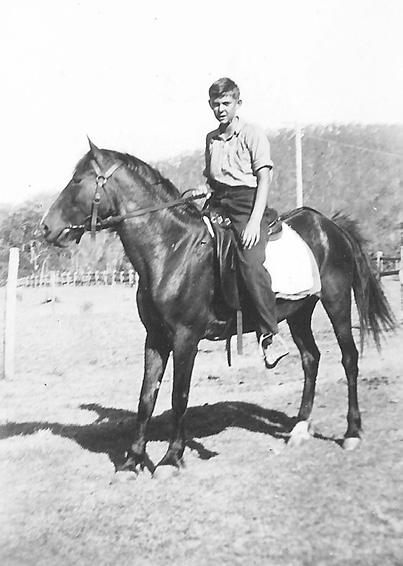
The author, Doug Best, as a 15 year old lad riding horse Mona at his grandparents farm Sweet Home Dairy, Payne Road, now Payne Road State School
Author and cinema buff, Doug Best, 1993
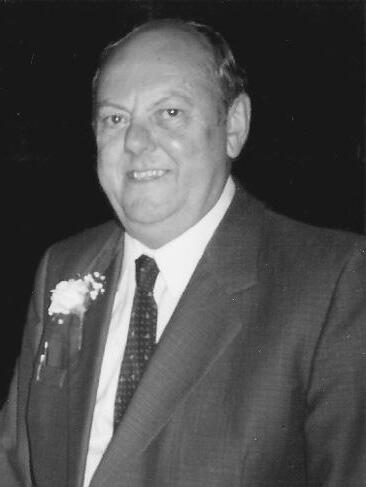
The following is a list of the theatres I can remember, before the era of television, which may be of interest to the younger generations. Some of the names I can not remember and would appreciate, if any readers could assist in providing the theatre names, to contact me on 3366 4778.
City Theatres: Regent, Majestic, His (then Her) Majesty’s, Wintergarden, St. James, Metro, Forum, Tivoli, Lyceum, Carlton News Reel Theatrette and the Odeon
Valley Theatres: Civic, Embassy, Rex and the Dendy Twin
Drive-in Theatres: Boondall, Starlight Aspley, Skyline Sunnybank, Keperra, Coopers Plains and Capalaba
Suburban Theatres:
Albion - Capitol
Alderley - Alderley
Annerley - Boomerang
Annerley - Odeon
Annerley - Annerley
Ascot - Arcadia
Ashgrove - Elita
Bulimba - Auro
Camp Hill - Planet
Chermside - Dawn
Clayfield - Savoy
Cribb IslandCoorparoo - Roxy
Darra -
East Brisbane - Triumph
Graceville - Regal
Gaythorne - Civic
Grange - Liberty
Hawthorne - Hawthorne
Inala -
Indooroopilly - Eldorado
Kalinga - Kalinga
Kelvin Grove - Prospect
Lutwyche - Imperial
Mitchelton - Mitchelton
Morningside -
Mount Gravatt - Princess
Mowbray Park - Mowbray Park
New Farm - Astor
NundahPaddington - Plaza
Paddington - Paddington
Redcliffe - Redcliffe Pier
Red Hill - State
Rosalie - Beverly
Sandgate - Beach
Sandgate - Bon Accord
Sandgate - Mayfair
SherwoodShorncliffe - Strand
South Brisbane - Princess
St Johns Wood - Ambassador
St Lucia - Avalon
Stones Corner - Alambra
Taringa - Victory
Toowong - Elite
Toowong - Jubilee
West End - Lyric
West End - Rialto
Windsor - Crystal Palace
Wooloongabba - Broadway
Wynnum - Imperial
Wynnum - Star
Yeronga - Ideal

© Copyright 2006The Gap Historical Society
